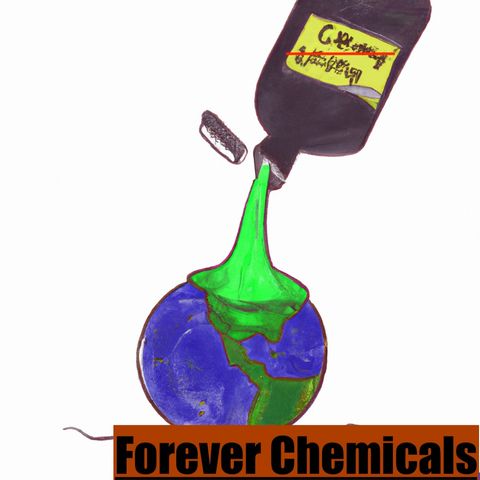
Contacts
Info
Per- and polyfluoroalkyl substances (PFAS) are a group of over 4,700 man-made chemicals that have been used in a wide range of products since the 1940s. PFAS are known for...
show more
Per- and polyfluoroalkyl substances (PFAS) are a group of over 4,700 man-made chemicals that have been used in a wide range of products since the 1940s. PFAS are known for their durability and resistance to water, heat, and stains, which has made them popular in a variety of applications, including:
show less
- Non-stick cookware
- Food packaging
- Water-resistant clothing and footwear
- Firefighting foam
- Electronics
- Paints and coatings
- Personal care products
- Cancer: PFAS exposure has been linked to an increased risk of certain types of cancer, including kidney cancer, testicular cancer, and non-Hodgkin lymphoma.
- Reproductive harm: PFAS exposure has been linked to reproductive problems in both men and women, including infertility, early menopause, and pregnancy complications.
- Developmental delays: PFAS exposure has been linked to developmental delays in children, including lower birth weight, delayed motor skills, and cognitive impairment.
- Using a water filter that is certified to remove PFAS
- Avoiding non-stick cookware and food packaging
- Choosing water-resistant clothing and footwear that is PFAS-free
- Using PFAS-free personal care products

Forever Chemicals
Forever Chemicals
Forever Chemicals
17 OCT 2023 · Per- and polyfluoroalkyl substances (PFAS) are a group of over 4,700 man-made chemicals that have been used in a wide range of products since the 1940s. PFAS are known for their durability and resistance to water, heat, and stains, which has made them popular in a variety of applications, including:
- Non-stick cookware
- Food packaging
- Water-resistant clothing and footwear
- Firefighting foam
- Electronics
- Paints and coatings
- Personal care products
However, PFAS are also highly persistent in the environment, meaning that they do not break down easily and can accumulate in the bodies of humans and animals over time. PFAS have been linked to a variety of health problems, including:
- Cancer: PFAS exposure has been linked to an increased risk of certain types of cancer, including kidney cancer, testicular cancer, and non-Hodgkin lymphoma.
- Reproductive harm: PFAS exposure has been linked to reproductive problems in both men and women, including infertility, early menopause, and pregnancy complications.
- Developmental delays: PFAS exposure has been linked to developmental delays in children, including lower birth weight, delayed motor skills, and cognitive impairment.
PFAS are found in the blood of nearly all Americans, and they have been detected in drinking water supplies across the country. The Environmental Protection Agency (EPA) has set health advisory levels for two of the most common PFAS chemicals, PFOA and PFOS, but there are no enforceable standards for PFAS in drinking water. The EPA is currently working to develop new regulations for PFAS, but these regulations are not likely to be finalized for several years. In the meantime, there are a number of things that individuals can do to reduce their exposure to PFAS, such as:
- Using a water filter that is certified to remove PFAS
- Avoiding non-stick cookware and food packaging
- Choosing water-resistant clothing and footwear that is PFAS-free
- Using PFAS-free personal care products
If you are concerned about your exposure to PFAS, you should talk to your doctor. They can help you assess your risk and recommend ways to reduce your exposure. In addition to the health risks associated with PFAS, these chemicals also pose a significant environmental challenge. PFAS can contaminate soil and groundwater, and they can be transported long distances through the air and water. Once PFAS are released into the environment, they can persist for hundreds of years. The widespread use and persistence of PFAS has led to significant contamination of the environment and human populations around the world. This contamination is a major public health and environmental concern. Governments and industries around the world are working to address the PFAS problem. However, it is clear that more needs to be done to reduce the use of PFAS, to clean up contaminated sites, and to protect people from exposure to these chemicals. Thanks for listening to Quiet Please. remember to like and share wherever you get your podcasts
Per- and polyfluoroalkyl substances (PFAS) are a group of over 4,700 man-made chemicals that have been used in a wide range of products since the 1940s. PFAS are known for...
show more
Per- and polyfluoroalkyl substances (PFAS) are a group of over 4,700 man-made chemicals that have been used in a wide range of products since the 1940s. PFAS are known for their durability and resistance to water, heat, and stains, which has made them popular in a variety of applications, including:
show less
- Non-stick cookware
- Food packaging
- Water-resistant clothing and footwear
- Firefighting foam
- Electronics
- Paints and coatings
- Personal care products
- Cancer: PFAS exposure has been linked to an increased risk of certain types of cancer, including kidney cancer, testicular cancer, and non-Hodgkin lymphoma.
- Reproductive harm: PFAS exposure has been linked to reproductive problems in both men and women, including infertility, early menopause, and pregnancy complications.
- Developmental delays: PFAS exposure has been linked to developmental delays in children, including lower birth weight, delayed motor skills, and cognitive impairment.
- Using a water filter that is certified to remove PFAS
- Avoiding non-stick cookware and food packaging
- Choosing water-resistant clothing and footwear that is PFAS-free
- Using PFAS-free personal care products
Information
| Author | Quiet. Please |
| Organization | William Corbin |
| Categories | News , Health & Fitness , Government |
| Website | - |
| corboo@mac.com |
Copyright 2024 - Spreaker Inc. an iHeartMedia Company
